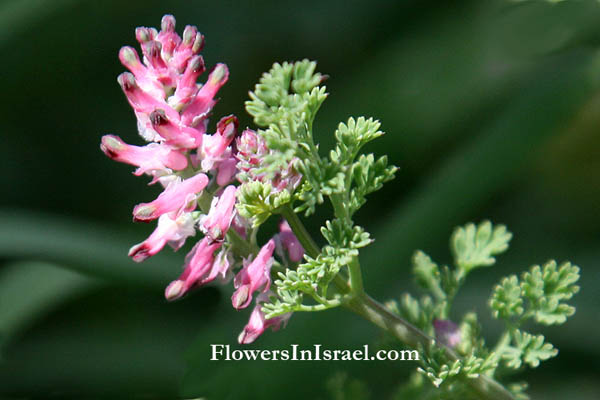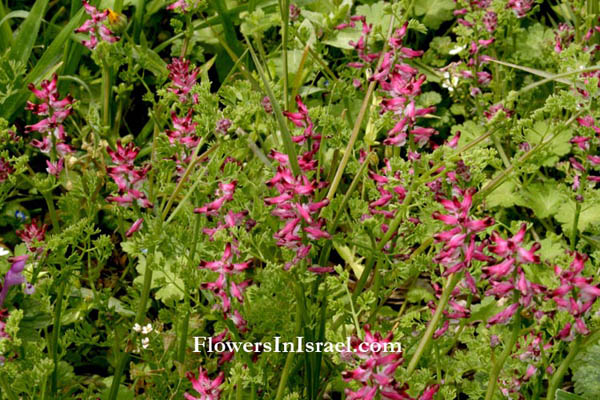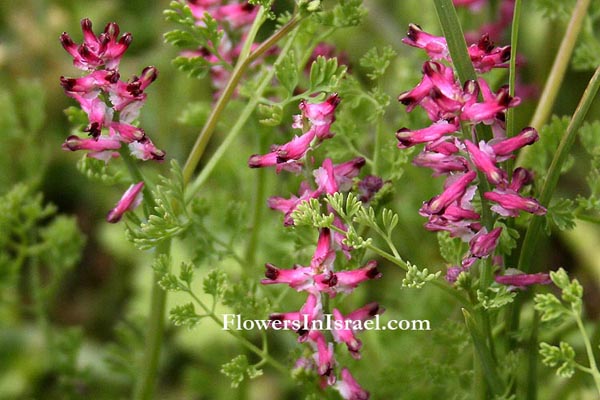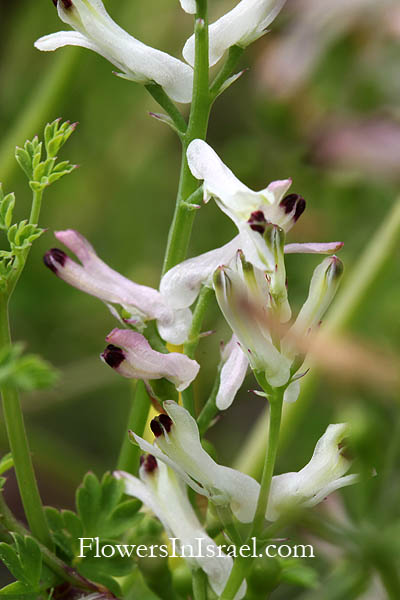Hebrew: עשנן צפוף, Arabic: شاهترج, Egypt: زيته "Zeita"
| Scientific name: | Fumaria densifloraDC. var.parlatoriana | |
| Synonym name: | Fumaria bracteosa Pomel | |
| Common name: | Dense-flowered fumitory | |
| Hebrew name: | עשנן צפוף | |
| Arabic name: | شاهترج | |
| Egypt: | زيته "Zeita" | |
| Family: | Fumariaceae, עשנניים |

|
| Life form: | Annual | |
| Stems: | 20–60 cm high; branched, generally glabrous, spreading or erect; sap colorless | |
| Leaves: | Alternate, rosette, dissected twice or more, dentate or serrate | |
| Inflorescence: | Terminal raceme | |
| Flowers: | Purple with white; sepals 2.5–3.5 mm long, broader than corolla; corolla 6–7 mm long | |
| Fruits / pods: | Capsule, 1-seeded, with neck equalling pedicel tip, wrinkled | |
| Flowering Period: | January, February, March, April, May | |
| Habitat: | Batha, Phrygana | |
| Distribution: | Mediterranean Woodlands and Shrublands, Semi-steppe shrublands, Shrub-steppes, Deserts and extreme deserts | |
| Chorotype: | Mediterranean | |
| Summer shedding: | Ephemeral |

Derivation of the botanical name: Fumaria, Latin fumus terrae, "smoke of the earth" and may refers to the smoky odour of some species in this genus or the smoky colour of some species when in flower. densiflora, densely flowered. capreolata, capreolus, prop, support, tendril; having tendrils. The Hebrew name: ashnan, עשנן ,from ashan, עשן (smoke), according to the scientific name fumaria.


Location: Poleg Gateway Nature Reserve |